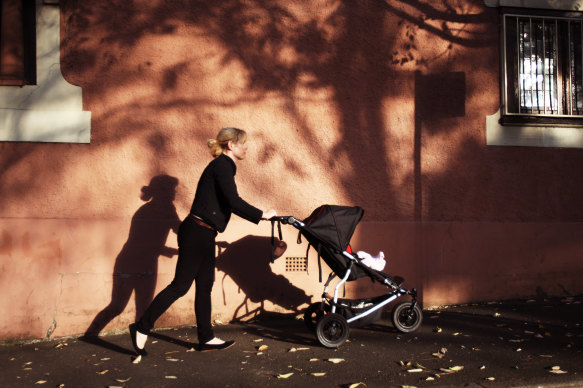Baby recession grips Perth as births drop to lowest level in two decades
New analysis shows Perth is in the midst of a baby recession, with births across the state having plummeted.
KPMG Australia said the number of births in 2023 was the lowest since 2006 as cost-of-living pressures impacted younger Australians’ ability to support children.

Despite births across Perth broadly trending down some suburbs are becoming hot spots for young families. Credit: Peter Braig
Last year 25,020 babies were born in Greater Perth, a significant reduction from the 2021 post-pandemic spike with 27,580 babies being born.
KPMG urban economist Terry Rawnsley said weak economic growth often led to reduced birth rates, but current cost-of-living pressures were having a particular impact.
He said financial pressure on households meant more people had delayed starting or expanding their families.
“We haven’t seen such a sharp drop in births in Australia since the period of economic stagflation in the 1970s, which coincided with the initial widespread adoption of the contraceptive pill,” he said.
“This combination of the pandemic and rapid economic changes explains the spike and subsequent sharp decline in birth rates we have observed over the past four years.
“This is against the backdrop of a long-term decline in the total fertility rate, which has declined from over two children per woman in 2008 to 1.6 in 2023.”
Despite births across Perth broadly trending down, suburbs such as the booming coastal community of Alkimos-Eglinton are hotspots for young families, recording strong fertility rates and hundreds of births in 2023.
But all 10 of the suburbs with the highest fertility rates are located on the sprawling urban fringes of Perth where house and land packages are cheapest.
“Young families are being pushed to the edges of the Perth where there is cheaper housing that can accommodate their children,” said Rawnsley.
Conversely, the suburbs with the lowest fertility rates are higher-income areas with ageing populations, surrounding Perth’s inner city.
Nedlands, Dalkeith and Crawley had the lowest rate of 1, closely followed by Maylands, South Perth and Kensington at 1.1, well below the 2.1 replacement level needed to maintain a stable population without migration.
Rawnsley said Perth was unique in its higher suburban fertility rates compared to east-coast cities where some suburbs had fertility rates below 1.
“This is because [Perth] does not have the same high-density precincts that attract high concentrations of international students and young professionals who are unlikely to start families in these locations,” he said.
In regional WA the fertility rate has declined 8.2 per cent since 2019.
Tasmania was the only region to see a noticeable increase in births compared to 2019 with 5850, up 2.1 per cent.
The Morning Edition newsletter is our guide to the day’s most important and interesting stories, analysis and insights. Sign up here.